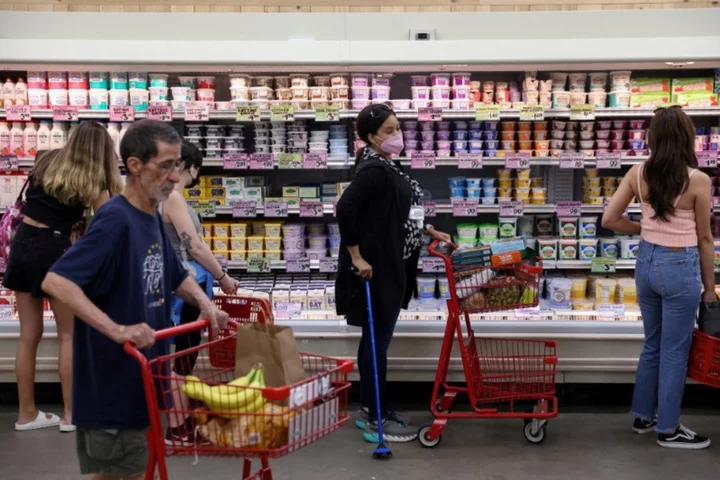WASHINGTON U.S. consumer spending accelerated in July, but slowing inflation strengthened expectations that the Federal Reserve would keep interest rates unchanged next month.
Consumer spending, which accounts for more than two-thirds of U.S. economic activity, increased 0.8% last month, the Commerce Department reported on Thursday. Data for June was revised up to show spending rising 0.6% instead of 0.5% as previously reported.
Economists had forecast spending increasing 0.7%.
Spending was boosted by outlays on both goods and services. Slowing inflation and a still tight labor market, which is keeping wage gains elevated, are supporting consumer spending and propping up the economy.
The government reported on Wednesday that the economy grew at a 2.1% annualized rate in the second quarter with consumer spending more than offsetting the drags from trade, an inventory drawdown and persistent housing market weakness.
Since March 2022, the Fed has raised its policy rate by 525 basis points to the current 5.25%-5.50% range. Financial markets expect the U.S. central bank will leave its benchmark overnight interest rate unchanged at its Sept. 19-20 policy meeting, according to the CME Group's FedWatch Tool.
Inflation as measured by the personal consumption
expenditures (PCE) price index rose 0.2% last month, matching June's gain. In the 12 months through July, the PCE price index increased 3.3% after advancing 3.0% in June.
Excluding the volatile food and energy components, the PCE price index gained 0.2%, after climbing by the same margin in the prior month. The so-called core PCE price index increased 4.2% year-on-year in July after rising 4.1% in June.
The annual PCE inflation rates were lifted by a lower base of comparison last year. The Fed tracks the PCE price indexes for its 2% inflation target.
Slowing inflation is fueling optimism that the central bank is probably done hiking rates and could engineer a "soft landing." Most economists have walked back their forecasts for a recession this year.
Though the labor market is cooling, with job openings dropping to their lowest level in nearly 2-1/2 years in July, conditions remains tight. Employers are mostly hanging on to workers after difficulties hiring during the COVID-19 pandemic.
Initial claims for state unemployment benefits fell 4,000 to a seasonally adjusted 228,000 for the week ended Aug. 26, the Labor Department said in a separate report on Thursday. Economists had forecast 235,000 claims for the latest week.
The number of people receiving benefits after an initial week of aid, a proxy for hiring, rose 28,000 to 1.725 million during the week ending Aug. 19.
The claims data have no bearing on August's employment report, which is scheduled for release on Friday.
According to a Reuters survey of economists nonfarm payrolls likely increased by 170,000 jobs in August after rising by 187,000 in July. The unemployment rate is forecast unchanged at 3.5%, a more than 50-year low.
(Reporting by Lucia Mutikani; Editing by Chizu Nomiyama)

